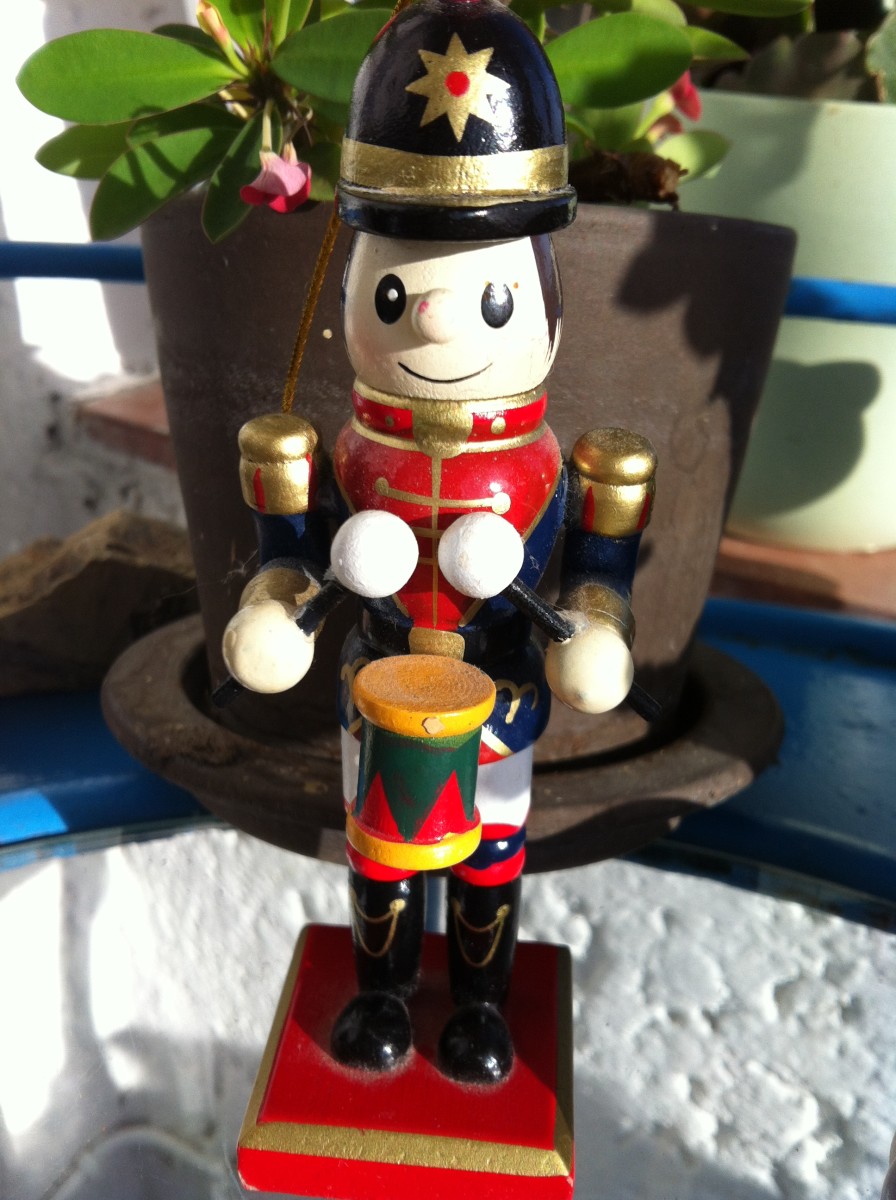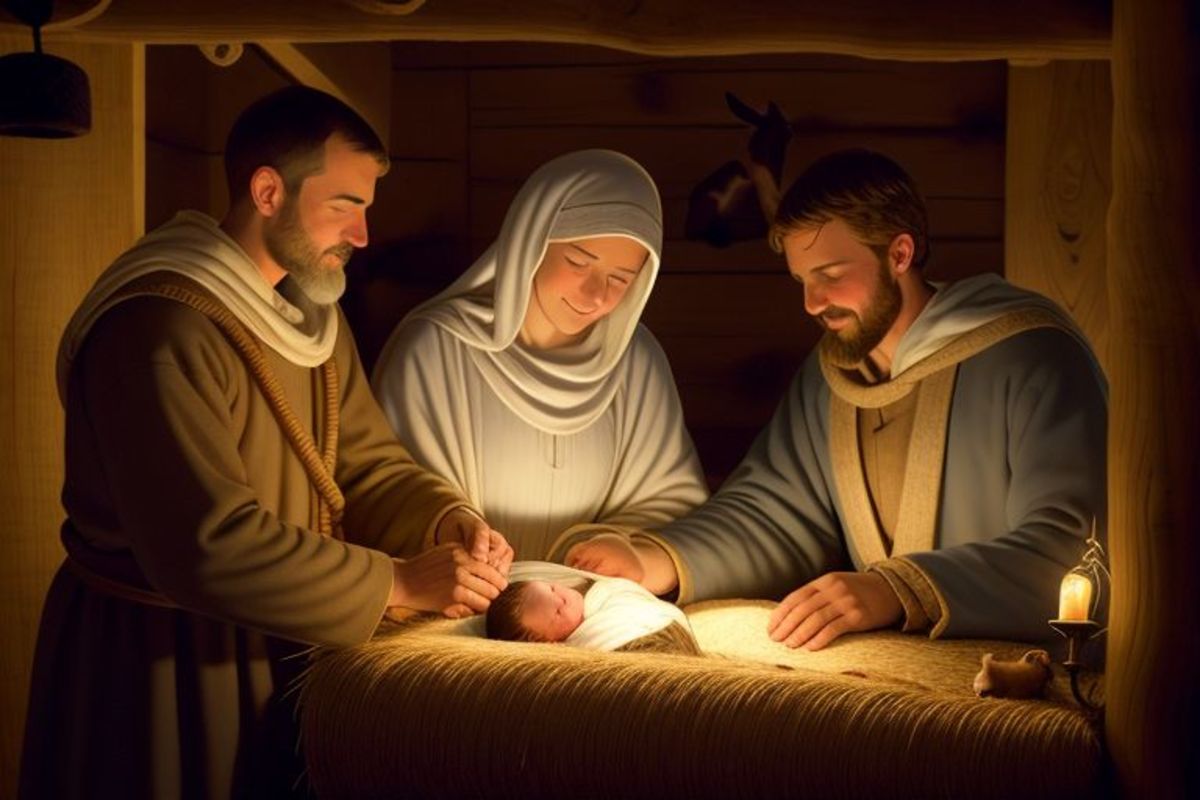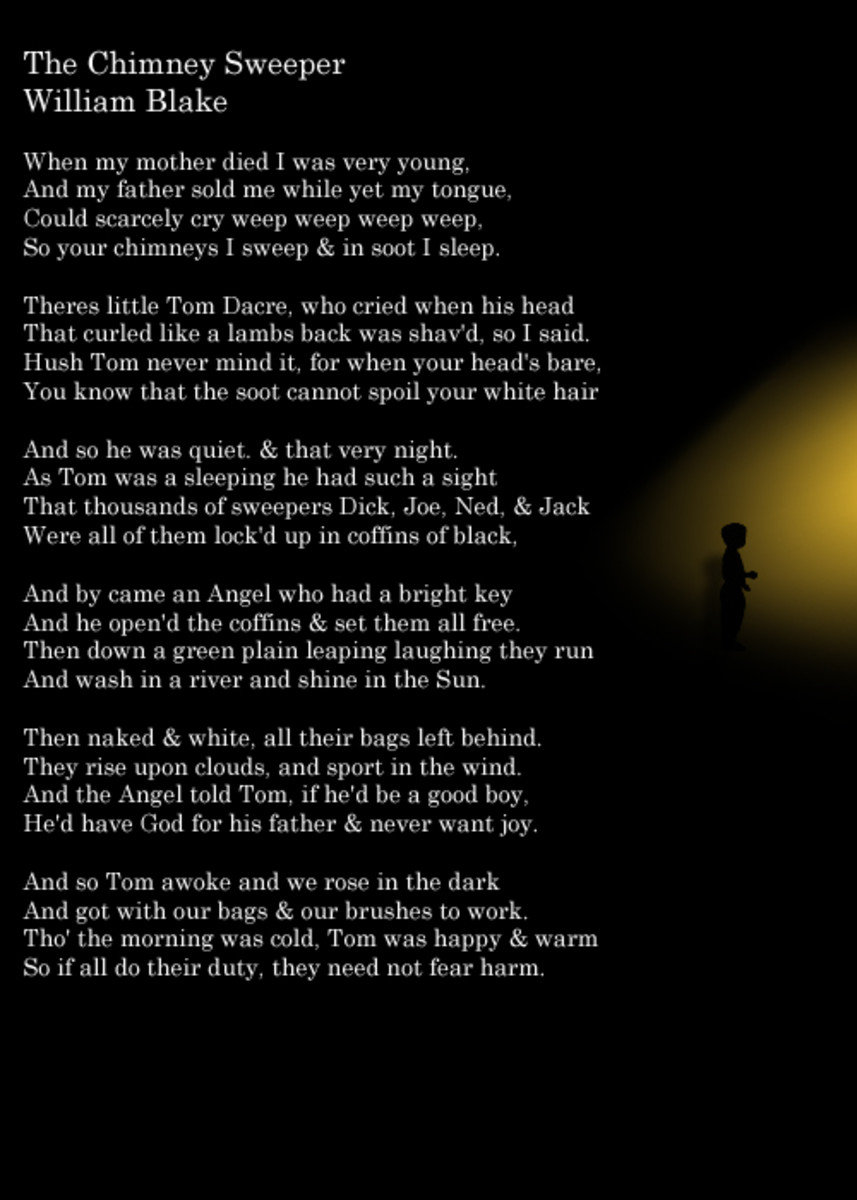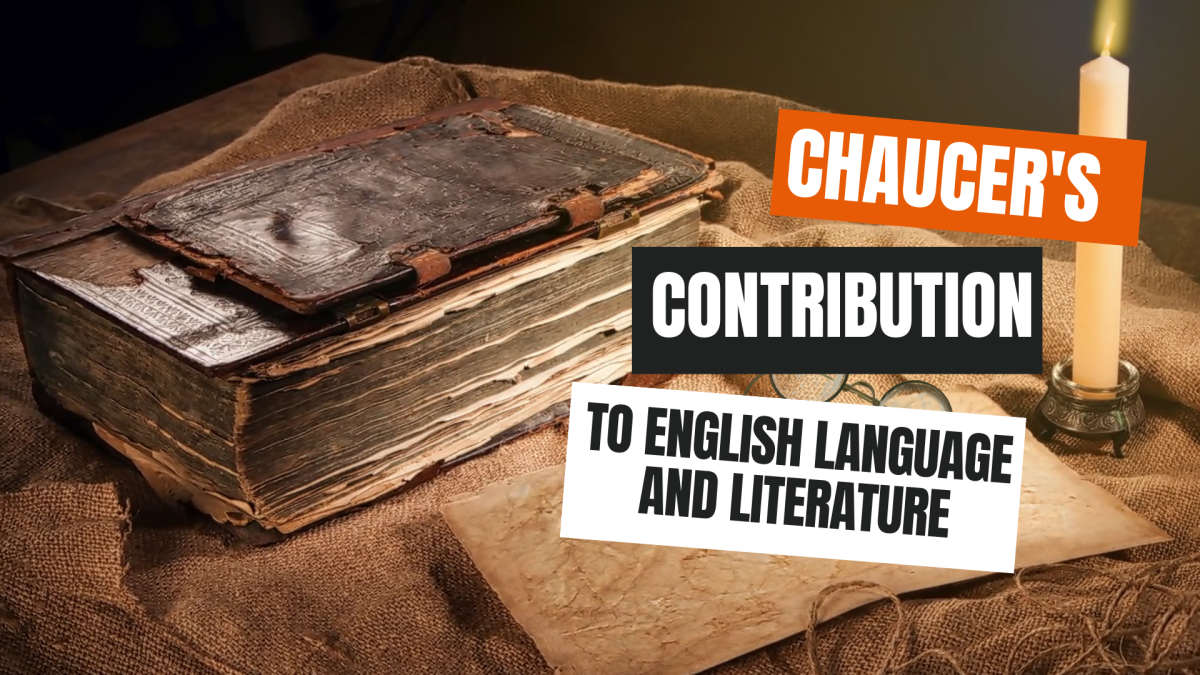- HubPages»
- Books, Literature, and Writing»
- Literature»
- English Literature
Charles Dickens' "A Christmas Carol"
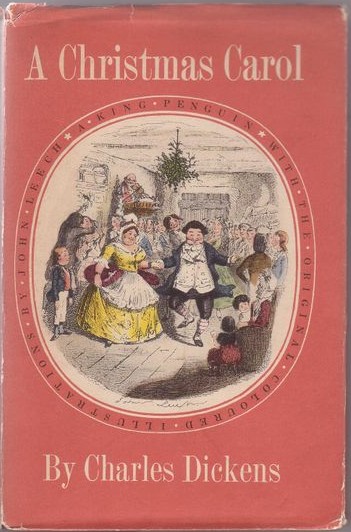
I am ashamed to say that although I have a tremendous love for literature and the holiday season, I had not read Dickens’ “A Christmas Carol” until just recently. Like so many others, I have enjoyed the old tale through various television and movie reproductions. The frightening old black and white version from my youth still haunts my memory, and the joyful Muppets’ rendition never fails to make me smile. So as the holiday season came upon me this year, I decided that it was high time that I dove into Dickens’ traditional version.
Context
Personally, I enjoy having some idea of the background of the author and period when reading and interpreting a particular piece of literature. “A Christmas Carol” was first published in 1843 as a series in a magazine. Even though “A Christmas Carol” is not considered to be Dickens’ best work, it has certainly stood the test of time and helped to shape the modern idea of Christmas. Charles Dickens’ main theme in “A Christmas Carol” presents the unfairness and indifference to social inequities. He presents the plight of the poor presenting rich Scrooge as the villain, at least at the start of the tale. Social responsibility was very important to Dickens. This was most likely the result of childhood issues young Dickens faced. Biographical information presents Dickens’ family situation one of poverty. When Charles was only a boy his family was placed in debtor’s prison and he was sent to work in a child labor factory (The Literature Network, 2013). This sad and traumatic time in his life shaped many of his works.
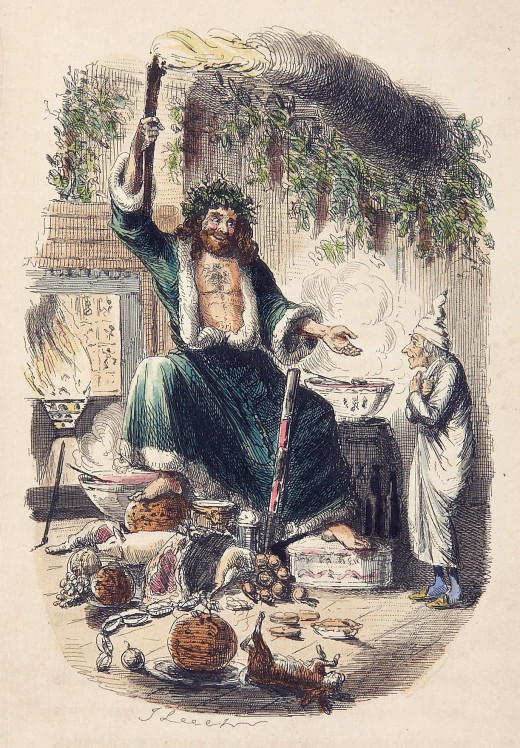
Interesting Tidbits
There are several small factors that vary in the literary version of Dickens’ famous story than typically portrayed on television. The book presents more accurate historical settings and daily life in 19th century London. One interesting point was that Scrooge ate at a pub since most people of the time did not have the means to eat at home. There were few reliable ways of safely storing food and cooking it properly so many people ate at pubs or other gathering places. Those few who were lucky enough to have a Christmas goose or turkey had it cooked at the baker’s. They did not cook the birds in their own homes. Although these points are merely background, facts like these add a fascinating depth to the story that viewers may not have the opportunity to enjoy with the more commercialized versions on television.
Scrooge
There are only subtle differences in the literary version to that seen in the more publicized movies. Scrooge opens as the villainous heel that we are all familiar with, but in the literary version he seems interested in changing his ways with the very first ghosts. Dickens offers points with each visitation where Ebenezer feels remorse and wishes that he could make amends. An example is when the ghost of Christmas past takes him to old Fezziwig’s place he sees what a wonderful employer he was and wishes he could be a better employer to Bob Cratchit. Dickens’ paints Ebenezer Scrooge as a miser who chooses a life of money and solitude to hide his pain of childhood desertion and loneliness but easily returns to the world of happiness and hope of Christmas joy with the reminders provided by the helpful spirits.
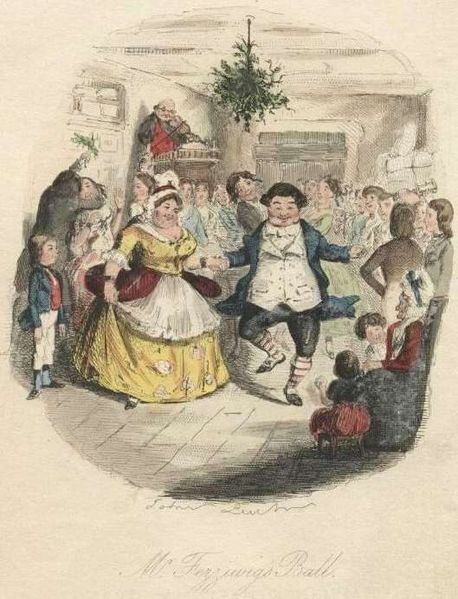
Languauge
Literature is something to be savored, and language is the means that the author “flavors” the work. Dickens’ rich language is offered through a fascinating narration. Although the story is offered primarily as a third person omniscient narration, the author writes in such a way that the story “feels” like a friend telling you the tale. The opening lines: “Marley was dead to begin with…dead as a doornail. Mind! I don’t mean to say that I know, of my own knowledge, what there is particularly dead about a doornail,” offer a wonderfully conversational tone that is reminiscent of oral storytelling traditions (Dickens, 1988, p. 15, para, 1-2). I can just imagine Charles Dickens sitting fireside telling the frightening tale with the firelight shadows dancing across his face. Dickens also offers some funny puns. My favorite is “there is more of gravy than of grave about you!” (Dickens, 1988, p. 30, para. 15). This quip is often included in modern movie versions as well. In the Muppet Christmas Carol this line is followed by the two cranky gentlemen in the balcony, Statler and Waldorf, laughing that it was a terrible pun. Lighthearted injections like this help to create a “comic relief” to such heavy topics: poverty, despair, and greed.
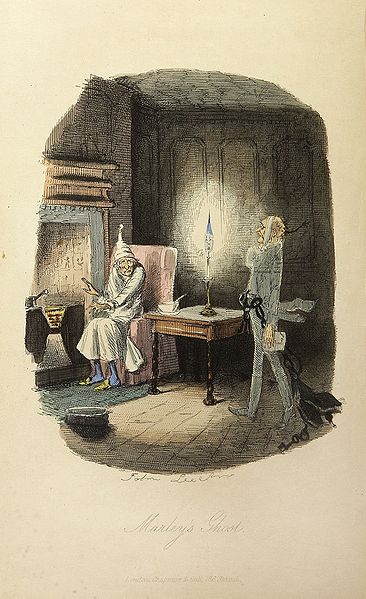
What Does a Ghost Story Have to Do with Christmas?
Although I believe that there are not many people who sit around the fire telling ghost stories on Christmas Eve in modern times this was a popular occurrence in Victorian times. It was common on Christmas Eve to gather around the fire and tell ghost stories (Peterson, 2010). Even the old Christmas carol “It’s the Most Wonderful Time of the Year” mentions the old tradition “there’ll be scary ghost stories, and tales of the glories of Christmases long, long ago” (Peterson, 2010). Many people still tell ghost stories when sitting around a campfire, so perhaps the lost tradition has just transformed a bit. The fireside was a gathering place for people of that era for light and warmth. Ghost stories may also have been told at this time since December 25th was the winter solstice. Pagan festivals celebrated this event. It was the longest night of the year and therefore the most darkness. It was thought of as the death of light and the sun, and was also considered the most haunted. Ghosts were believed to walk the Earth this night and take care of unfinished business (Peterson, 2010). Dickens’ story reminds us of this old holiday tradition and keeps festive ghosts stories alive.
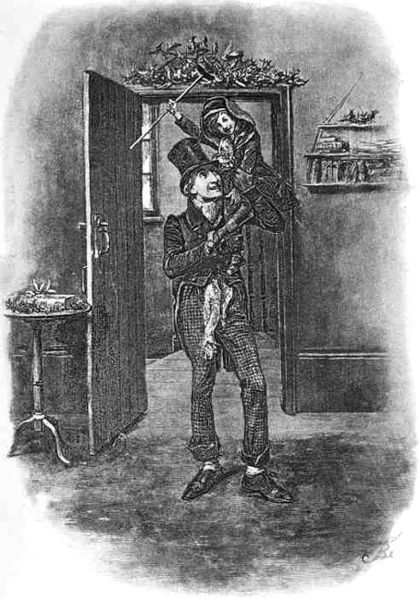
Why Read the Story?
Sure you know what is going to happen. Scrooge is going to see the errors of his ways, buy the prize turkey, and spends the rest of his days keeping Christmas alive in his heart and actions. Still like so many other stories the movies can never compare to the original book. By reading each short chapter, each offering a facet of the story, the opening, each ghostly visit, and the happy resolution, readers can get a feel for what readers of the original serialized version had experienced. Each chapter offers a little taste. Like any good story you can’t wait to the end to learn what happens. Imagine living in London during the 1800s and having to wait until the next portion of the story came out to find out if Scrooge really would make amends. The story is good fun, plain and simple. So grab some eggnog and allow yourself some Christmas reading. Dickens presents a wonderful holiday tale that has lived on as a Christmas tradition for centuries. So like old Ebenezer let us keep Christmas well, and as Tiny Tim says “God bless us, every one!”
Popular Movie Versions
For those still not convinced to read the original story, there are many wonderful movie versions that present the story quite well. One of my favorites is the 1984 version starring George C. Scott as Ebenezer Scrooge. Other more "fun" versions would include Disney's modern rendition with Jim Carey.
References
Dickens, C. (1988). A Christmas carol and other stories. The Reader’s Digest Association, Inc.: Pleasantville, NY.
Peterson, J. (2010 December 23). Telling ghost stories is a lost tradition on Christmas eve. Desert News. Retrieved from http://www.deseretnews.com/article/705363363/Telling-ghost-stories-is-a-lost-tradition-on-Christmas-Eve.html?pg=all
The Literature Network. (2013). Charles Dickens. Retrieved from http://www.online-literature.com/dickens/






